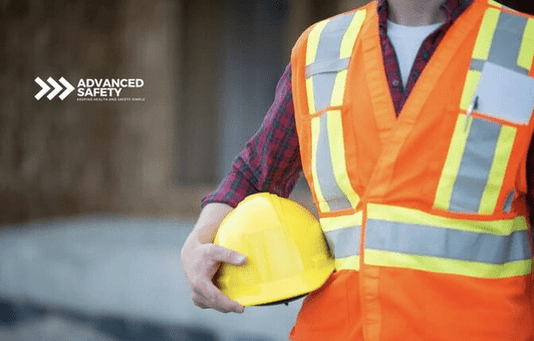Construction sites are dynamic environments, bustling with activity and progress. While these sites contribute significantly to infrastructure and development, they also present numerous risks.
Ensuring health and safety in construction is vital not only for regulatory compliance but also to protect workers, enhance productivity, and foster a culture of safety.
This comprehensive guide explores the importance of safety in construction, the role of regulations, actionable safety measures, and the steps management can take to promote a safer working environment.
Why Health and Safety in Construction Matters
Construction remains one of the highest-risk industries globally. Workers face hazards such as working at heights, handling heavy machinery, and exposure to hazardous materials. Prioritising health and safety ensures:
Fewer Accidents: Proper measures reduce the likelihood of injuries and fatalities.
Improved Productivity: Safe workers are more confident and efficient.
Compliance with Laws: Adhering to regulations protects companies from fines and legal complications.
When organisations prioritise safety, they demonstrate care for their workforce, build trust with stakeholders, and set themselves apart as responsible industry leaders.
Want to Improve Your Workplace Safety?
Contact Advanced Safety for expert guidance and support.
Contact Us TodayThe Role of Health and Safety Regulations
Protecting Workers and Setting Standards
Health and safety regulations form the foundation of safe practices in construction. In New Zealand, the Health and Safety at Work Act 2015 (HSWA) mandates employers to manage workplace risks and provide a safe working environment. Key requirements include:
Conducting regular risk assessments.
Providing training and safety equipment.
Implementing robust emergency preparedness plans.
These regulations are designed to prevent accidents, protect workers, and ensure organisations follow industry best practices.
The Cost of Neglecting Safety
Failing to implement safety measures can lead to:
Accidents and Injuries: Resulting in worker suffering, legal liabilities, and project delays.
Financial Losses: Increased insurance premiums, compensation claims, and potential fines.
Damaged Reputation: A history of unsafe practices can deter clients and stakeholders.
For example, Ethan Perham-Turner was killed when timber framing weighing 350 kilograms fell on him at a residential building site in Ōmokoroa in March 2022. The 19-year-old was just four months into his apprenticeship. The businesses involved were fined almost half a million dollars, not to mention the emotional damage caused for all parties concerned.
Key Elements of a Construction Safety Program
Developing an effective safety program involves integrating policies, practices, and education into daily operations.
1. Safety Training and Education
Comprehensive training ensures workers understand safety protocols and can respond to emergencies. Essential components include:
Onboarding Sessions: Cover basic safety measures.
Specialised Training: Focus on equipment usage, fall protection, and hazard identification.
Continuous Learning: Regular updates on new risks and regulations.
Encouraging active participation in safety programs empowers workers and promotes a sense of responsibility.
2. Regular Safety Inspections
Routine inspections identify hazards before they cause harm. Effective inspections should:
Be conducted by qualified personnel.
Address issues like scaffolding stability, electrical safety, and signage clarity.
Involve workers in identifying risks.
Prompt action on findings helps prevent accidents and reinforces a commitment to safety.
3. Personal Protective Equipment (PPE)
Providing and maintaining PPE is a fundamental aspect of safety. Examples include:
Hard Hats: Protect against falling objects.
High-Visibility Vests: Ensure workers are seen on site.
Safety Gloves and Boots: Shield hands and feet from injuries.
Organisations must educate workers on proper PPE usage and conduct regular checks to ensure equipment is functional and compliant.
Implementing Health and Safety Measures on Construction Sites
Hazard Identification and Risk Management
Construction sites require constant vigilance. Key practices include:
Spotting Hazards: Through regular inspections and feedback from workers.
Assessing Risks: Evaluating the likelihood and severity of potential incidents.
Implementing Controls: Using engineering solutions, signage, or alternative work methods.
Emergency Preparedness
Accidents happen despite precautions, making preparedness critical. Essential steps include:
Fire Drills: Ensure workers are familiar with evacuation routes and fire equipment.
Medical Response Plans: Maintain well-stocked first aid kits and train responders.
Communication Systems: Establish clear protocols for contacting emergency services.
Management’s Role in Promoting Safety
Leading by Example
Leadership commitment to safety is vital. Managers can:
Allocate resources for safety initiatives.
Regularly communicate safety goals and progress.
Recognise and reward safe practices.
Fostering a Safety-First Culture
Encourage open communication by:
Allowing workers to report hazards without fear of reprisal.
Conducting frequent safety meetings and toolbox talks.
Incorporating feedback into safety improvements.
Leveraging Technology for Safety
Modern tools simplify safety management. Digital platforms can:
Streamline hazard reporting and tracking.
Automate safety audits and documentation.
Provide training materials accessible anytime, anywhere.
Investing in such solutions enhances compliance and fosters efficiency.
Client Success Stories
Discover how Advanced Safety has made a difference for businesses like yours.
Read MoreFAQs on Health and Safety in Construction
1. What are the top hazards in construction?
Common hazards include falls from heights, equipment accidents, and exposure to hazardous materials.
2. How often should safety training be conducted?
Training should be provided during onboarding and refreshed periodically, especially when introducing new equipment or procedures.
3. What role does management play in safety?
Management sets the tone for safety culture, provides resources, and ensures accountability at all levels.
4. Why is PPE important?
PPE serves as a critical barrier between workers and potential hazards, reducing the risk of injury.
5. How can I improve emergency preparedness on-site?
Develop clear plans, conduct regular drills, and ensure workers are trained in emergency response protocols.
Recommended Posts
Conclusion
Health and safety in construction are not just legal obligations—they are essential commitments to workers, clients, and the industry’s future.
By implementing robust safety programs, adhering to regulations, and fostering a culture of safety, organisations can protect their teams, enhance productivity, and build a reputation for excellence.
Ready to enhance safety on your construction sites? Contact Advanced Safety today to start building safer workplaces.


